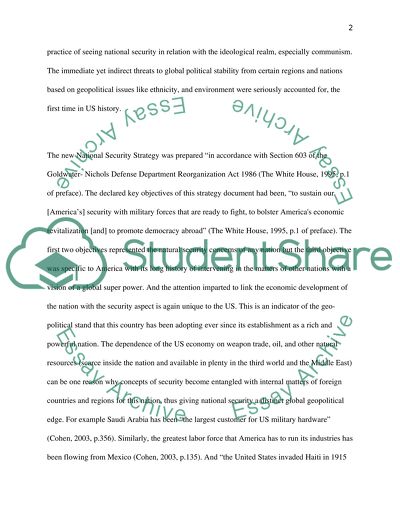Cite this document
(“A geopolitical analysis of The Clinton Administration's 1995 National Research Paper”, n.d.)
Retrieved from https://studentshare.org/history/1393425-a-geopolitical-analysis-of-the-clinton-administrations-1995-national-security-strategy
Retrieved from https://studentshare.org/history/1393425-a-geopolitical-analysis-of-the-clinton-administrations-1995-national-security-strategy
(A Geopolitical Analysis of The Clinton Administration'S 1995 National Research Paper)
https://studentshare.org/history/1393425-a-geopolitical-analysis-of-the-clinton-administrations-1995-national-security-strategy.
https://studentshare.org/history/1393425-a-geopolitical-analysis-of-the-clinton-administrations-1995-national-security-strategy.
“A Geopolitical Analysis of The Clinton Administration'S 1995 National Research Paper”, n.d. https://studentshare.org/history/1393425-a-geopolitical-analysis-of-the-clinton-administrations-1995-national-security-strategy.


